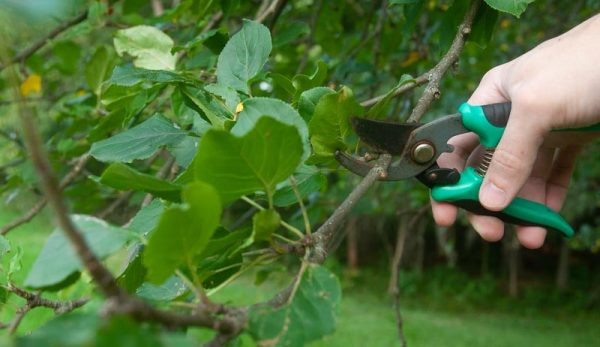Table of Contents
The gardener’s favourite, camellias, grows really well for a long time with the right pruning methods. But is it that easy to prune them? Wondering what the right ways to prune your camellias are? Pruning camellias is not a rigorous task.
It is important to know the growing pattern of your camelia before pruning. Camellia varieties such as espalier are vigorous growers, and they will require a specific way of pruning. Basically, people neglect to prune their cultivars and notice the necessity of pruning after the effects become noticeable.
What brings you to this guide for Camelia pruning? Looking forward to bringing your camellias back to good shape? Do you have doubts regarding pruning your plants? Get all your answers here.
Let us help you find out everything there is to know about pruning the most eye-catching plants in your garden.
How to Prune Camellias
As mentioned earlier, knowing the variety of camellia you have in your garden will provide you with a lot of insights about how and when to prune them. But it is not necessary for one to always know the variety of the plant as they don’t come with a label. In such cases, all you have to do is take your time and observe the plant.
Don’t rush. This analysis will give you an idea of the plant’s growth pattern. By knowing the behaviour of your plant, the frequency of its growth, blooming time, and withering time, you can get an idea of when and how to prune it. Scroll down to learn about various essential steps you should follow during camellia pruning.
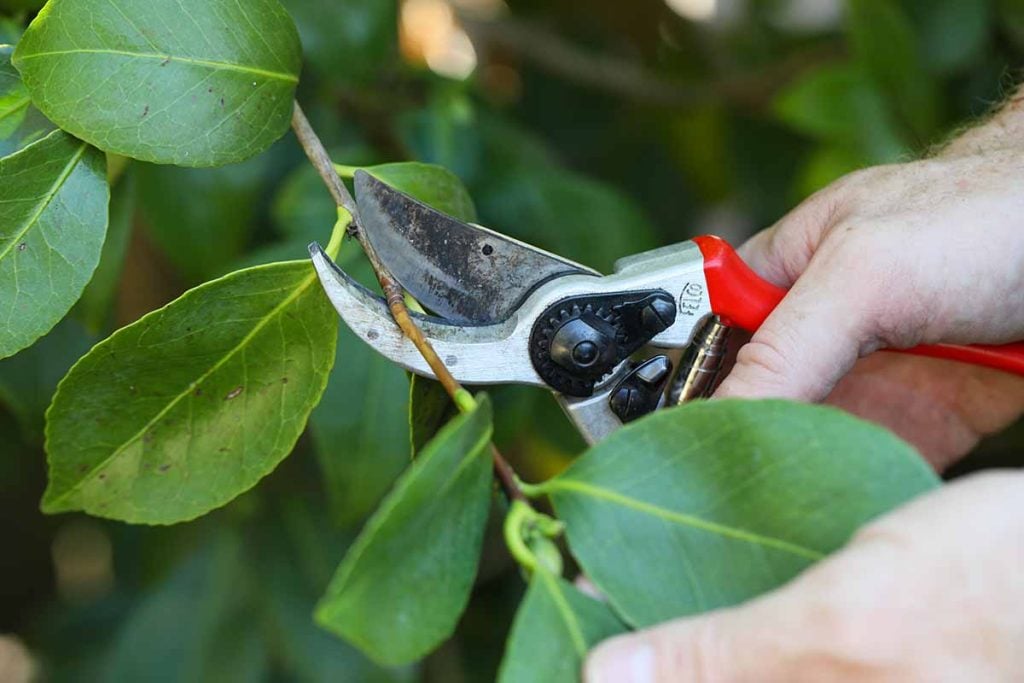
Step 1: Be Ready at The Right Time
As soon as your plants stop blooming, you can start pruning them immediately. This mostly comes right after the spring season. Though it is recommended, also consider the species of camelia you have in your garden because their pruning times may differ according to species. To get in-depth knowledge about the species you have, it is recommended to have a chat with an experienced gardener. Also, it is not bad to prune your plants during other times of the year if your idea is only to keep them in good shape.
Step 2: Use Sharp Tools
Sharp tools are recommended to prune plants. Sharp shears can make clean cuts on short stems. Neat and sharp cuts heal faster than uneven chops and can help the plant grow faster. Make sure that the tools are well cleaned not to spread infections from a previously pruned diseased plant.
Step 3: Removing Overgrown and Dead Parts of Your Camellias
While cutting off the leaves of your camelia, make sure to cut to the nearest branch. Make sure not to touch the raised ridge between two branches while pruning the leaves. It is from these ridges that the plant will start growing new sprouts to protect itself from infections.
If your plant is overgrown, it is suggested to prune more toward the inner parts of your camelia. This will allow airflow and reduce the chances of infection. You can also use the cropped mulch as manure for the same plant. Once the plant has finished withering its blooms completely, you can cut the branches from their ends to the length you want them to grow. This will help you get the plant into the desired shape and grow in a specific direction.
Step 4: Thin out The Branches
It is suggested to prune the foliage and bracts of camellias by thinning them. This is an effective way to make the camelia immune to diseases. When you thin out their branches, a free airflow is made possible for the plant, which will keep it healthy.
Step 5: Fertilising the Camelias and Maintaining Them
This is the final part of the pruning process. Using an acidic fertiliser, you can fertilise your camellias during the seasons of spring and the start of summer for the best results. Always make sure to water the camellias adequately to keep them safe from going brown due to fertilisers. Also, due to their acid-loving nature, don’t plant them in alkaline soil.
Excessive watering should be strictly avoided when maintaining camellias. When exposed to a wet, moist base, they most likely will invite fungus issues.
Step 6: Removing Dead Flowers
Once the flowering season ends, the withered blooms might stick to the branches and create an unpleasant look for your plant. Removal of such dead blooms is called “deadheading. Rather than using tools, you can deadhead your plant with your bare hands.
Camelias and pruning
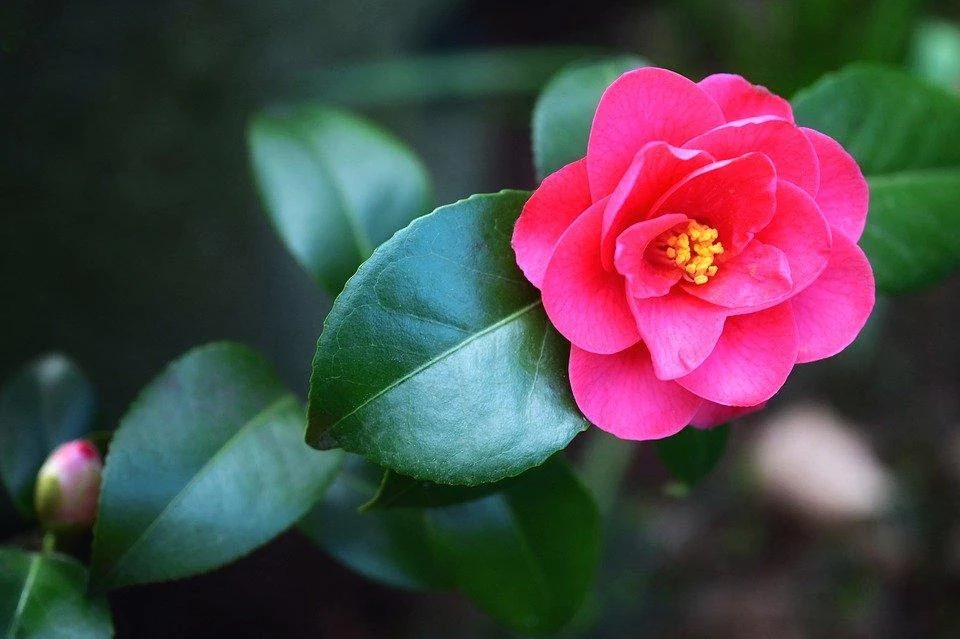
For those who are really into container gardening, camellias are a good option to consider. As far as the rules for growing camellias go, you can directly plant them in your garden but should provide special care for them during extremely hot and cold conditions. The two best things about camellias are their foliage and their blooms. While their foliage provides privacy and shade throughout the year, their beautiful blooms will last from winter to spring.
There is an equation for pruning plants:
Pruning = art + science
Pruning is a perfect amalgamation of art and science. As you are trying to keep your plant in a good, desired shape, this involves art. With the right method of pruning, you can make the plant look as you like. But again, you should also understand the health effects that pruning has. What does pruning do to your plant’s growth, and how and when to prune them? This involves science. Hence, it is important that you have adequate knowledge of camelia pruning.
When it comes to pruning, most cultivars do fine on their own. But if you are expecting proliferating blooms, then pruning is an unavoidable step. After planting camellias in your garden, it is safe to say they will be fine on their own for around four years. All you have to do is perform routine checks to avoid diseased or dead stems. After your camellias are well established with the right growing conditions, you can then start analysing the need for pruning for their betterment.
When to Prune Camelias
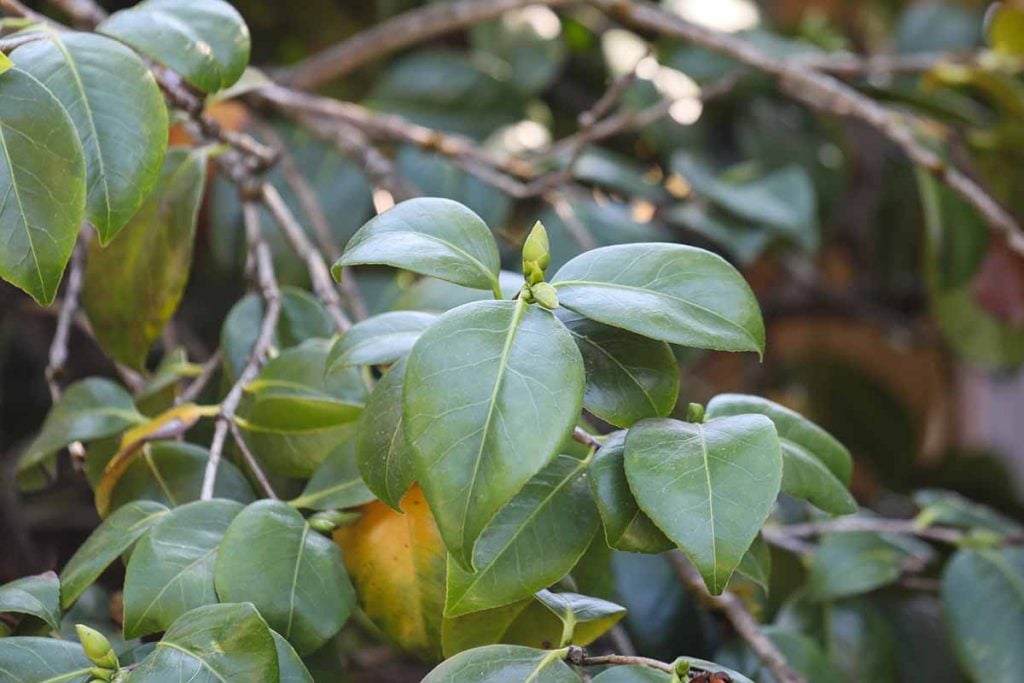
It is suggested by expert gardeners that pruning camellias is best done in late spring. This will help the sunlight swoop into the unexposed parts of the shrub. It is good to have knowledge about the hardiness zones in your area to zero in on the best times to prune your plants.
When it comes to camellias, what you should actually know is when not to prune them and when to prune them. If you are just interested in giving your shrubs a neat look, you can try pruning your plants at any time of the year. But if your goal is to increase flower production next year, you should consider pruning the plants right after the flowering period. Basically, it is all about pruning your plants before the next growth starts so that you can keep them in good shape.
Camelia Pruning and Its Significance
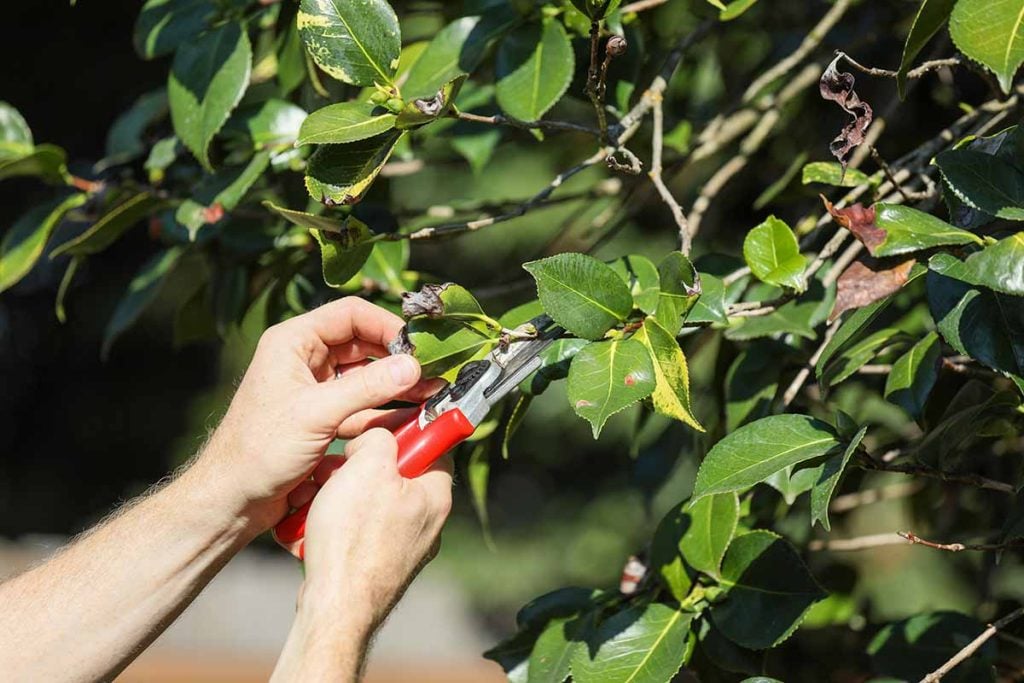
When it comes to gardening, it is common for plants to undergo diseases, be infested with scales, etc. At this point, the significance of pruning comes to light. Whenever you go past a beautifully grown plant in a big display, we bet it has gone through some neat pruning to look great. Even though camellias are low-maintenance plants, they do require pruning at a particular interval of time.
A simple answer to why you should prune camellias is that they won’t look good without pruning. We bet the reason you opted for camellias in your garden is to add to the beauty of the place. Hence, there is no point in not making the most of your garden by keeping your cultivars in good shape. However, it is not just about maintaining the look of your plant. Over the years, camelia branches will get droopy, and the beauty of the flowers will also droop significantly. This will also make your camelia susceptible to diseases. All of these problems can be easily avoided with proper pruning.
Wrapping Up!
Camellias are popular because of the beauty they bring to your place. Most people stumble upon the idea of pruning them. If you have a large camelia, cutting it short will only do more harm to your plant. As it has a larger root system, it can provide all the nutrients to the shorter part above and ignite the growth further. Also, if you have just moved to a new place recently, there is a chance that you have automatically inherited a garden of camellias that are not in good shape. Whatever the scenario is, the one-liner here is: Camelias demand pruning to stay in good shape.
And with the tips shared in this guide, we hope you understand everything there is to know about camelia pruning.
Frequently Asked Questions
Is It Okay to Cut Back Hard During Camellia Pruning?
Camellias can easily withstand hard pruning. It is safe to cut back hard if you notice any issues with the plant. If your camellias show a significant deterioration in growth or if the production of flowers comes down rapidly, you can cut them down to 3 feet in height. This will help the plant grow in a more well-structured manner and in a bushier way, thereby increasing the intensity of blooming.
What is the Best Way to Prune Camelia?
There is no single preferred way to prune camellias. The best way to prune them will depend on the variety and size of the plants. Until your camellias are 4 years old, you don’t have to worry about pruning at all. In general, it is recommended to prune them after every flowering season to keep them in shape and to avoid dead parts.
How Often Can Camellias Be Pruned?
All you have to keep in mind is, “What is the necessity of Camellia pruning? The answer is to keep the plants healthy. Whenever you see your plant doing badly, you can prune it. Otherwise, annual pruning will do.
How Can I Reduce the Size of a Bush?
You can reduce the size of a bush not in one go but over multiple prunings. The first time, you can cut the bush to the size you want. The following year, you can cut the new growth at that height. This will help produce branching.

